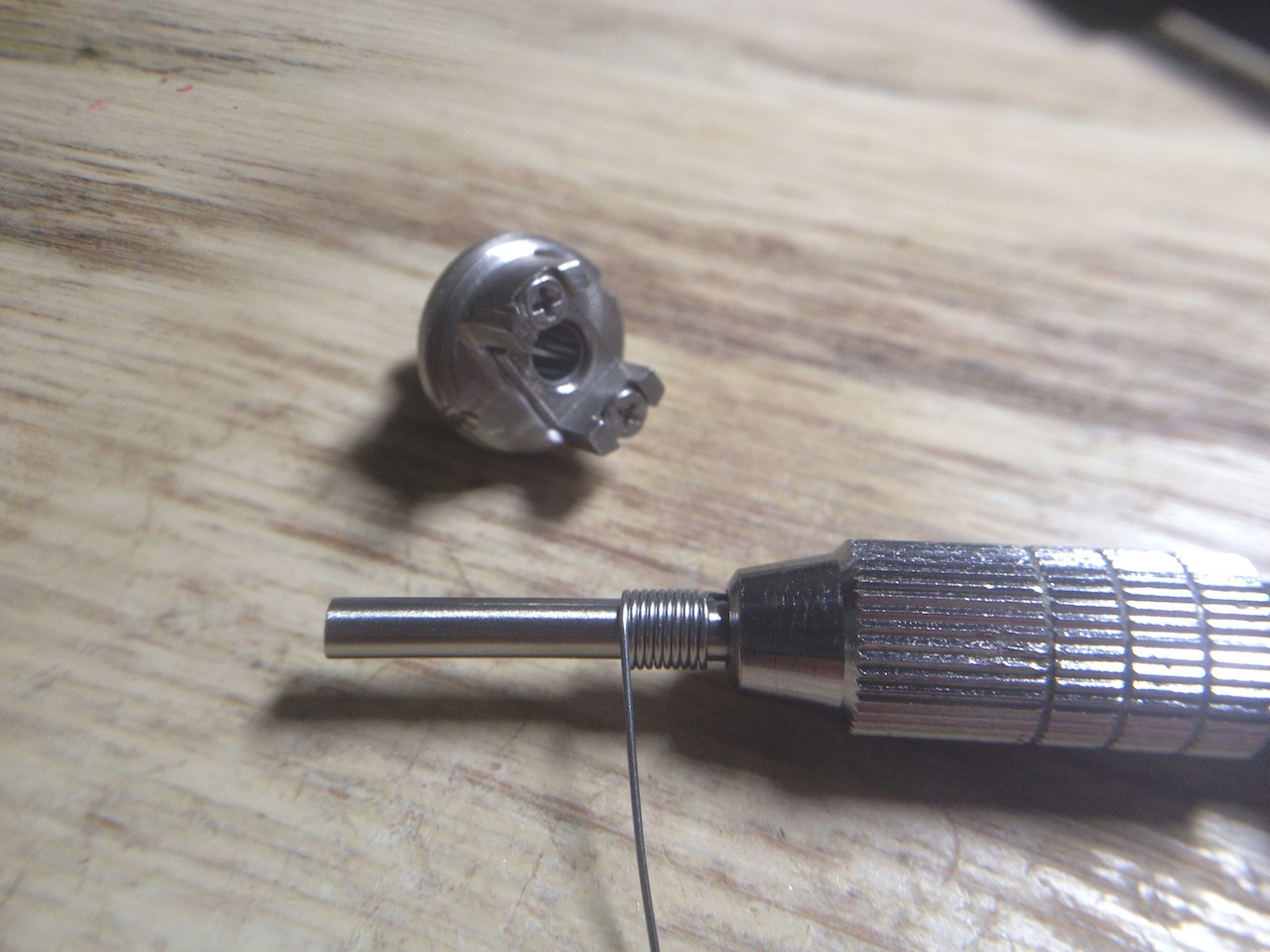Yeah I have found that with the relatively light gauge wire I prefer (28-26 ga) I can not consistently get good coils using anything except a power drill with a 2.8mm bit chucked in it with the wire wrapped around the end of the bit before I chuck it down. Then I grab the free end of the wire with a pair of pliers and pull the trigger so the bit slowly turns while I'm keeping a consistent tension on the wire and the wire angled slightly back so it is nearly at the point of winding on itself.
Perfect coils like the ones in the pic 99% of the time.
They are pretty. I can't quite pull that off with my gear consistently. Even on the RYOBI with a well discharged batt. Still too torquey unless I just let'r go. Just carefully separate out the coils from the run then. No trouble to just de-wind some well matched end turns but end up using a lot of wire. Resorting to that more and more these days with 24AWG. No biggie. If you're left with just the machine wound loops those end turns are far more likely to share the same strain as the rest of the coil. In that sense the jig/drill/lathe pulls are likely to be quite consistent. If you can match that with hand turning you're in good shape. Can with thinner gauges. Getting interesting with the fat wire.
Like you Russ I'm gravitating back towards thinner wire. Really diggin' 25AWG for the slightly higher res over 24g. Didn't fail to notice TEMCO dropped the gauge just before Kanger's explosive intro of the Subtank and larger Ø winds. Think their spec is .5mm (metric) NiChrome.
Tell ya what 25x2 9/8 2.82mm=0.4985Ω (#34 wire gauge, 2.8194mm) has turned into a workhorse of a wind Ø for me. Have used it in everything variable watts. Even works somewhat well as a Nextel wind for 3mm RxD singles (although a bit more compression yields more flavor). Only a 35W (4.2v) build at 9-turns on a mech but you can put some power through it with a box.
Lately I'm groovin' on 24x2 7/6 2.82mmØ=0.3205Ω 25x2 7/6 2.7051mm= 0.3835Ω shootin' for a roughly 3mm coil width for coverage area on mech's. Despite the diff in the latter the thinner wire comes up prrettty close on surface power 187v190mW/mm2 with a slight drop of the Ø. As I mentioned to Slip you've gotta throw 72W at 22AWG and a lot more coverage to get that much power (187mW) to the juice. Now true you've got 4.2mm of that and so more production at .21Ω…but about the same vaporization density. As efficient as a t.m.c. is at conversion the lower aspect wire is diffusing less of that power. So more power to the vape! Nough' said.
So I'm with you Russ on less is often more relatively and you can get a very dense diffusable output (after the fact) from a well thought out wind. Enjoy the benefits of production and flavor…while you still got some battery left! LOL And with 11 of these yokels sittin' in front of me this mornin, don't need to be batt swappin' every 5 mins.
Good luck all.
I don't expect all will agree with me or even understand. I've spent a lifetime of learning and for all the answers, even more questions.



Last edited:



